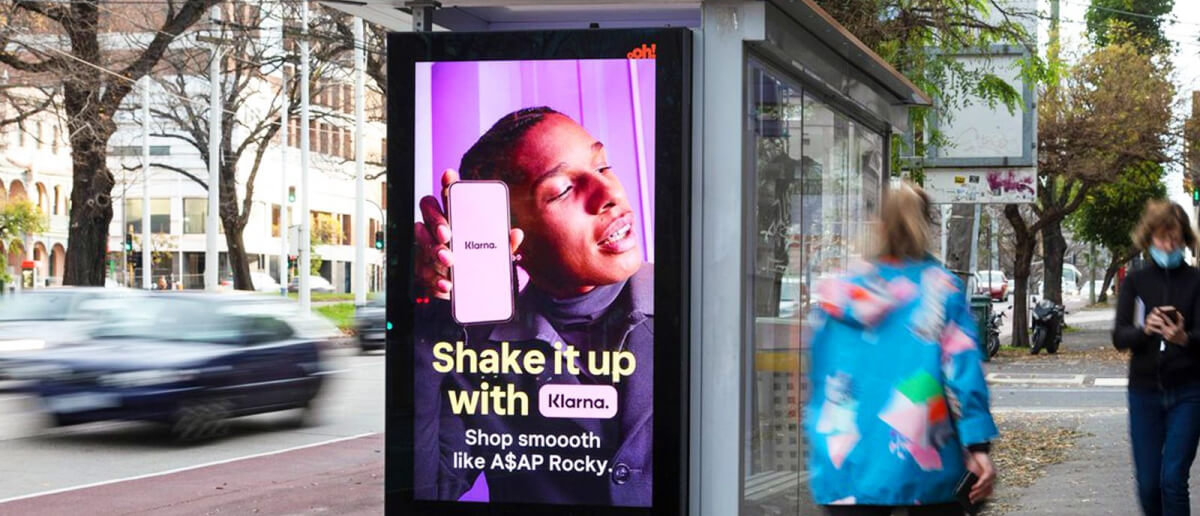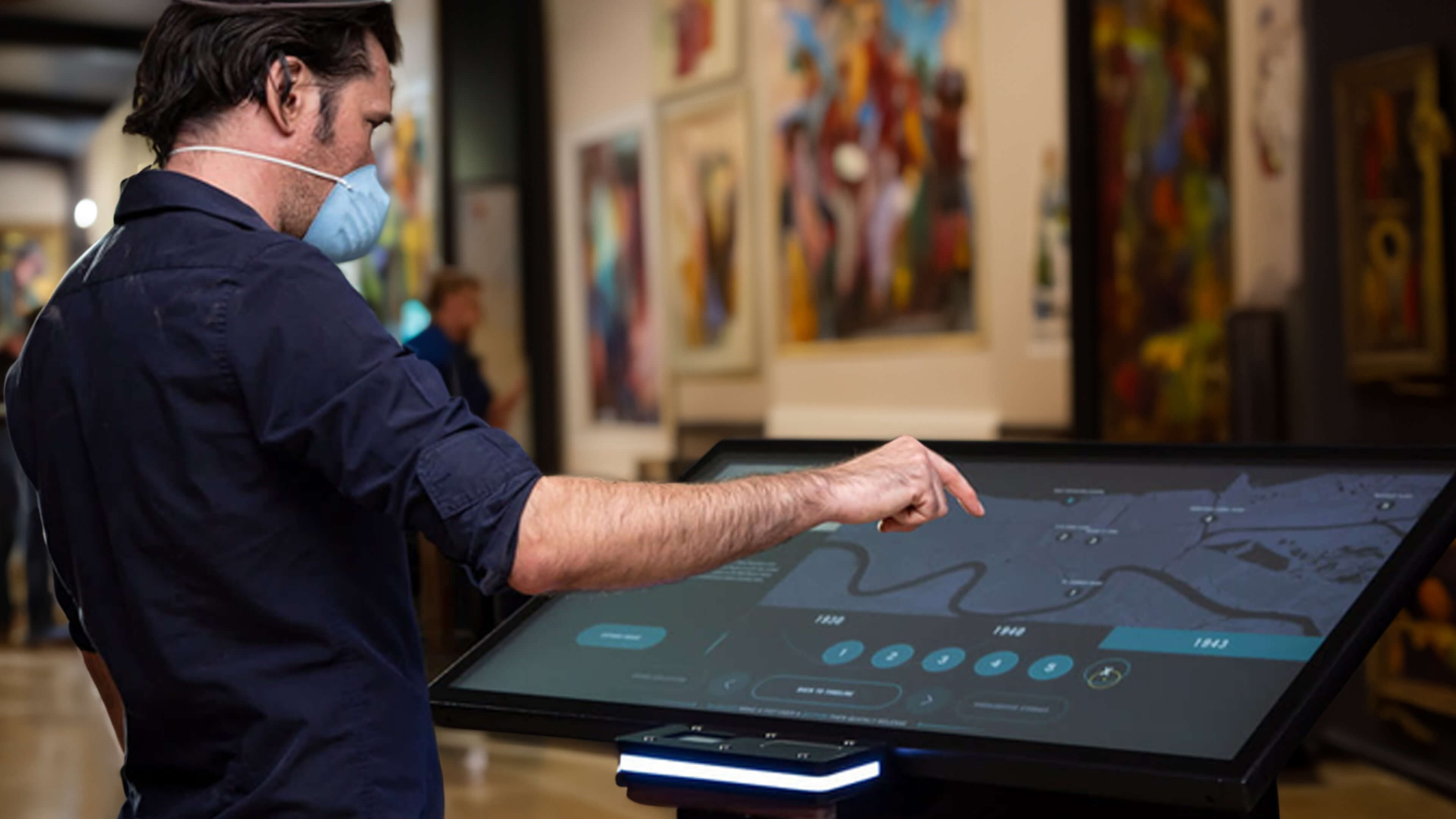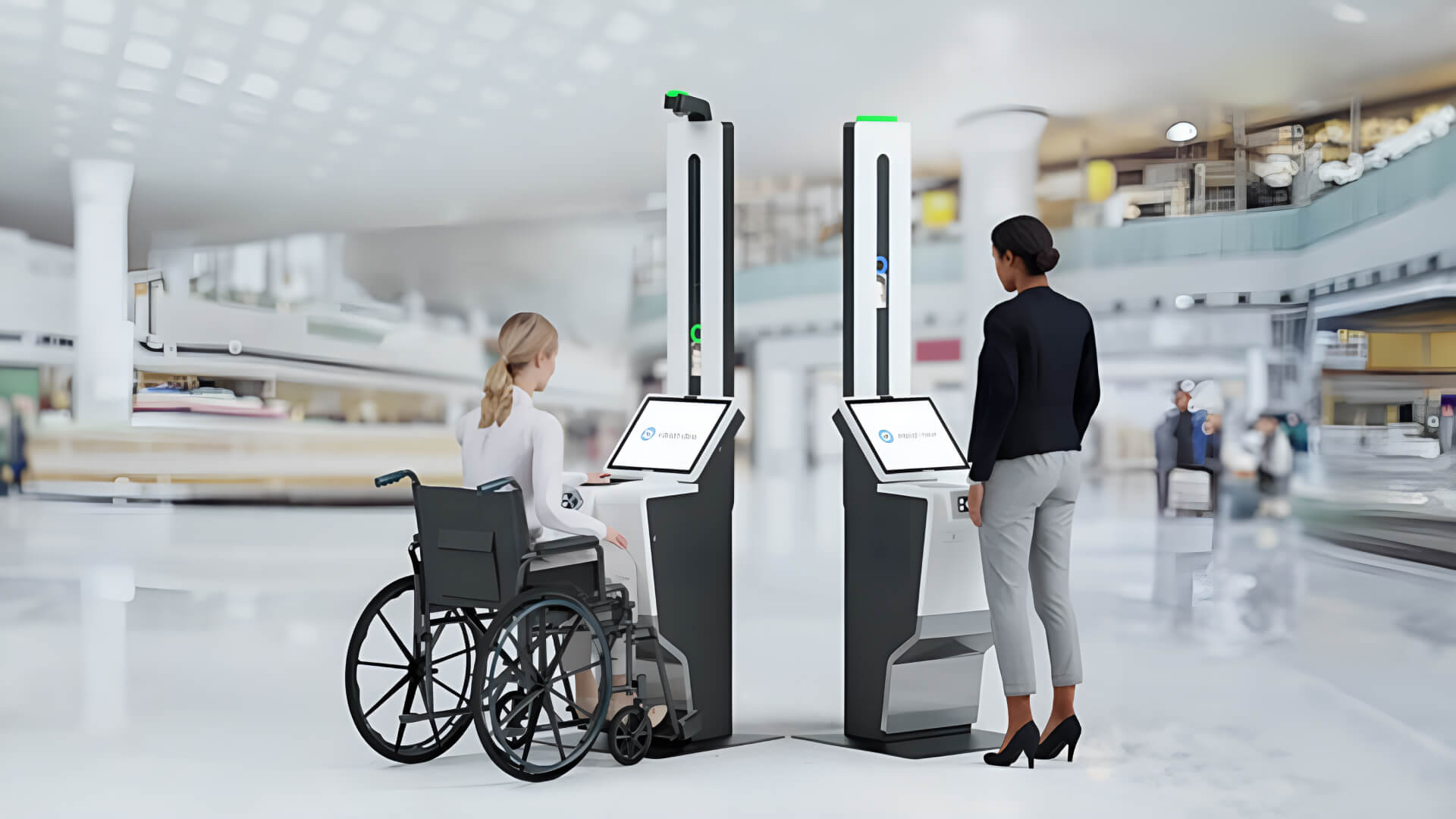
Dec 21 2023
8 min read


Jul
Dynamic digital signage refers to using cutting-edge screen technology and advanced software, offering businesses unparalleled versatility and interactivity for immersive experiences. It is crucial to captivate audiences with visually compelling, personalized content in the competitive market. It is essential to contemporary strategies across various commercial, hospitality, and corporate environments.
Here are some classic examples of digital signage creating one-of-a-kind user experiences:
Interactive kiosks enable users to engage with the content directly. These serve as the ideal touchpoints, offering a range of functionalities and experiences.
For example, shoppers at a giant clothing outlet can browse product catalogs, explore different product options, view additional details, and even complete a purchase directly via the same booth. This enhances the shopping experience by providing customers with a self-service option to access information and complete transactions.
Dynamic digital signage with gamification elements is a powerful way for businesses to captivate and involve their audience. They can create an enjoyable experience beyond mere advertising by incorporating playful and interactive features.
A fashion retailer, for example, might deploy interactive screens in their store where customers can participate in fashion quizzes. Fast-food chains might offer mini-games on digital kiosks for customers waiting for orders. Related to the brand or products, players can win rewards like coupons or special offers.
Gesture recognition is a cutting-edge technology that enhances user interactions by eliminating the need for physical touch. These displays can detect users’ gestures or movements using cameras and advanced computer vision, allowing for a touchless and immersive experience.

Museums use gesture-based displays for interactive exhibits. Visitors can zoom in on artwork, flip virtual pages of historical documents, and trigger related multimedia content with gestures.
Interactive wayfinding displays support navigation in large venues or campuses. Visitors input their destination, and the signage screens guide them to their desired location. For instance, a university campus may have interactive displays that help students find specific buildings or departments by providing clear directions on the screen.
Also read: How interactive retail wayfinding is helpful
Interactive AR displays merge virtual elements with the real world, offering an immersive experience. In a virtual fashion retail store, customers can use their smartphones to try on different outfits and accessories using augmented reality (AR) technology. This enhances their shopping experience and helps them make informed fashion choices.
Interactive digital signage can be advantageous beyond advertising. Here’s how it is applicable across industries:
Interactive product displays engage customers, allowing them to try products virtually.
For instance, in IKEA stores
, customers can use their smartphones to view AR content superimposed onto a living room setting, virtually placing furniture pieces to see how they fit and match the decor. This allows customers to make better purchasing decisions and envision how the products will look in their homes before buying, enhancing their shopping journey.

In corporate settings, dynamic technology is used for internal communication, employee recognition, and displaying key performance metrics, fostering a more informed and engaged workforce.
Digital screens at bus stops display real-time schedules and directions for commuters. Digital screens at bus stops can incorporate intelligent transport software like Passenger Information Display Systems (PIDS) to showcase real-time vehicle location, road traffic conditions, and directions for commuters, ensuring they have up-to-date information to plan their journeys efficiently.
Real-time updates on events and wayfinding in hotels create seamless guest experiences. Hotel digital signage can offer virtual tours that transport guests to different destinations within the hotel or nearby attractions in a compelling and immersive manner. Guest-facing signage should provide facilities for exploring rooms and amenities through a real-time touch interface and VR headsets, helping guests anticipate their experience before physically experiencing it.
Interactive digital signage in schools and universities aids in delivering dynamic educational content, enabling students to engage with interactive learning materials and access campus updates.
Informative digital signage displays in waiting rooms provide patients with patients health tips and appointment reminders.
The entertainment industry employs motion digital signage in theaters, amusement parks, and concert venues, providing self-ticketing services, interactive event schedules, maps, and promotions, enhancing the overall guest experience.
Here are a few of Pickcel’s clients who bought screens to life, all thanks to animated digital signage.
Client: Panache
Panache, a Swiss media consulting agency, aimed to enhance their QSR client’s visual storytelling project with digital photo frames. The challenge was managing content without USB connectivity.
Pickcel’s digital signage software provided a scalable and hardware-neutral solution. Seven Android tablets with the Pickcel app-enabled remote content scheduling and monitoring. Smooth playback of moving pictures in framed displays created a unique dining experience, resulting in a successful collaboration. Pickcel’s solution offers effortless scaling and supports various media players and OS versions, featuring pre-built apps for added convenience.
Client: Asian Paints
Asian Paints, India’s largest paint company, enhanced customer experience in 2500 retail stores using Pickcel’s interactive kiosks for color selection. During idle time, they employed Pickcel’s digital signage software to display promotional content, resulting in improved customer engagement and enhanced marketing efforts.
The easy device setup via QR code registration and content management system with regional and distributor-based scheduling proved highly effective in maximizing the dynamic digital signage technology’s potential.
Client: NEC
Pickcel collaborated with Japan’s NEC Corporation to implement an Intelligent Passenger Information System (PIS) for the Bus Rapid Transit System (BRTS) project in Ahmedabad and Hubli-Dharwad, India. The PIS solution, integrated with NEC’s Automatic Vehicle Location System (AVLS), provided real-time bus information on 150 digital signage displays at BRTS bus stops.
The system maintained a latency of just 2 seconds, relaying bus updates, emergency messages, and advertisements. As a result, the BRTS projects achieved significant success, with Hubli-Dharwad BRTS recognized as the ‘Best Urban Mass Transit Project.’ Pickcel’s digital signage software enhanced commuter engagement and ensured smooth transit with essential bus information.
Implementing interactive digital signage solutions can have several challenges. Some of these are:
Introducing dynamic digital signage could encounter obstacles like upfront setup expenses, compatibility issues with hardware, and content generation.
Content management issues can arise due to constant updates. Implementing a robust content management system and content scheduling can streamline this process.
Technical issues, such as connectivity problems or software glitches, can be mitigated through regular maintenance and having a responsive support team.
Ensuring scalability requires choosing flexible hardware and software solutions that adapt to changing business needs and expanding networks.
Businesses can overcome these challenges in the following ways:
Plan and budget efficiently to allocate resources.
Invest in scalable and future-proof technology for long-term flexibility.
Adopt a robust content management system (CMS) for easy scheduling and updates.
Utilize a dedicated support team for swift issue resolution.
Address scalability by selecting hardware and software solutions that accommodate business growth, considering cloud-based systems for more effortless scalability and centralized management of multiple displays across various locations.
Return on Investments (ROI) is crucial to measure the impact of dynamic digital signage campaigns. Different industries and campaign goals require specific key performance indicators (KPIs) to assess effectiveness.
Businesses in the retail sector can leverage this technology to track performance indicators that impact their success. Sales uplift is a critical KPI that measures the increase in sales attributable to implementing dynamic digital signage.
Retailers can evaluate their promotional strategies and optimize content by analyzing data on the conversion rates of products featured on digital displays. Foot traffic tracking allows retailers to understand the impact of digital signage on attracting customers.
In office settings, digital signage displays internal communications, updates, and recognition messages. Measuring employee engagement through surveys helps determine its effect on fostering a more informed and engaged workforce. Tracking message retention and conducting post-campaign quizzes assess the effectiveness of conveying essential information.

Additionally, for streamlining operations, KPIs include tracking efficiency improvements, time saved on communication tasks, and overall productivity gains achieved through enhanced internal communication.
In hotels and resorts, KPIs for dynamic digital signage campaigns may include guest engagement metrics, such as the number of interactions with interactive displays and the time spent viewing content. Additionally, hotels may measure the impact of upselling amenities and services through dynamic displays in lobbies or rooms.
By tracking these KPIs, hotels can understand the effectiveness of their signage in enhancing guest experiences and increasing revenue.
Businesses must be mindful of specific rules and guidelines when using dynamic digital signage in healthcare, education, transportation, etc. Data privacy and accessibility are critical concerns ensuring sensitive information is protected and content is accessible to all users.
For the healthcare industry, such as hospitals, clinics, and healthcare providers, compliance with HIPAA guidelines is essential when using dynamic digital signage. HIPAA, or the Health Insurance Portability and Accountability Act, is a US federal law enacted in 1996. It sets national standards for protecting individuals’ sensitive health information and ensuring patient privacy and data confidentiality.
Since dynamic digital signage may involve displaying patient-related information, such as appointment reminders or health tips, adherence to the same is of utmost importance to protect patient’s personal and medical data.
Compliance with accessibility standards guarantees the content is legible and accessible to individuals with disabilities in retail or corporate settings.

Additionally, safety regulations are vital to prevent distractions and ensure dynamic signage does not compromise passenger safety in the transportation sector.
Dynamic digital signage offers immense potential for businesses to revolutionize communication and engagement with their target audience. Integrating dynamic digital signage with cutting-edge technologies further amplifies its impact and effectiveness. Companies can enhance satisfaction by creating interactive customer experiences.
Businesses all over the world have capitalized on the power of integration. Retail stores increasingly combine dynamic digital signage with mobile apps, enabling customers to scan QR codes and access additional product information or exclusive offers. Utilizing technology for seamless content updates and facial recognition for personalized interactions are exciting possibilities.
Take complete control of what you show on your digital signage & how you show it.
Start Free Trial Schedule My Demo
Dec 21 2023
8 min read

Dec 19 2023
6 min read

Dec 14 2023
7 min read

Dec 8 2023
8 min read